Malaria is proving more difficult to treat than previously thought, as drug resistance is linked to multiple genetic mutations in the parasite rather than a single one. This is the conclusion of an international study involving scientists from ICVS published in Nature Communications.
The research confirms a 2020 hypothesis by Pedro Ferreira and Isabel Veiga from UMinho’s Life and Health Sciences Research Institute (ICVS). They proposed that changes in the plasmepsin and mdr1 genes were behind resistance to antimalarial drugs.
The new study shows that resistance to piperaquine — a key antimalarial drug — is due to multiple genetic alterations, particularly variations in the plasmepsin 3 gene. These mutations are linked to reduced effectiveness of the dihydroartemisinin-piperaquine combination therapy and a higher risk of malaria recurrence, especially in children in African countries where malaria is widespread.
“This discovery confirms what we suggested five years ago and has major implications for how we control and treat malaria,” says Pedro Ferreira. The findings highlight the need for advanced monitoring methods, as current surveillance strategies focusing on single mutations may no longer be adequate.

Pedro Ferreira and Isabel Veiga
Repeated Treatment Reduces Effectiveness
Piperaquine stays in the body for weeks, providing prolonged protection against reinfection. In contrast, dihydroartemisinin remains active for only a few hours, leaving piperaquine unprotected. Future antimalarial combinations should aim for similar pharmacokinetics to slow down resistance development.
However, piperaquine’s long half-life could become a disadvantage if used repeatedly, especially in high-incidence areas or for routine prevention in children and pregnant women. Repeated exposure allows the parasite to adapt faster, increasing the risk of reinfection post-treatment. Scientists warn that if no action is taken, piperaquine may lose its effectiveness as a preventive drug in many countries.
The study was led by Sweden’s Karolinska Institute and involved 20 scientists from institutions including the Universities of Lisbon, Minho, Nova de Lisboa, Exeter (UK), Tübingen and Heidelberg (Germany), Bamako University of Science and Technology (Mali), the Medical Research Centre of Lambaréné (Gabon), the German Center for Infection Research, and Brazil’s Oswaldo Cruz Foundation.
The team now plans to test alternative drugs like sulfadoxine-pyrimethamine for use in pregnant women and explore their prophylactic potential when alternated with piperaquine to maintain protection without speeding up resistance.











